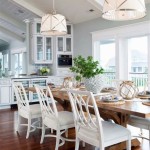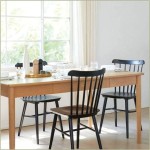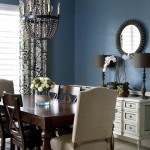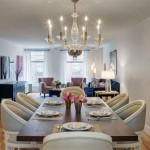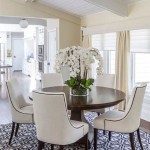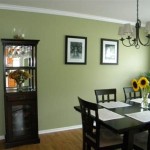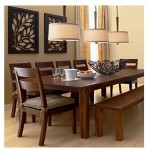Dining Room Tables for 12 People: A Comprehensive Guide
Selecting a dining room table for 12 people requires careful consideration of several factors. The table must not only be large enough to comfortably seat the intended number of individuals but also complement the existing décor and fit within the available space. The dimensions, material, style, and overall functionality all play crucial roles in making the right choice. This article aims to provide a detailed overview of these considerations, helping potential buyers make an informed decision when investing in a dining room table designed for larger gatherings.
Understanding Size and Dimensions
The primary consideration for a dining room table for 12 people is its size. A general guideline is to allocate at least 24 inches of width per person and a table depth of at least 36 inches to comfortably accommodate place settings and serving dishes. Therefore, a rectangular table designed for 12 people typically needs to be at least 96 inches (8 feet) long. However, a length of 108 inches (9 feet) or even 120 inches (10 feet) is preferable to provide more elbow room and prevent crowding. The width should ideally be between 42 and 48 inches to allow for serving platters in the center without hindering conversation across the table.
Beyond the table dimensions themselves, the surrounding space within the dining room must also be factored in. A minimum of 36 inches of clearance between the table and any walls or furniture is recommended to allow for comfortable movement around the table. Ideally, 48 inches of clearance is preferable to accommodate people walking behind seated diners. This extra space also facilitates serving and clearing dishes. Failure to consider surrounding space can result in a cramped and uncomfortable dining experience, negating the purpose of having a large table in the first place.
Round tables can also accommodate 12 people, but they require a considerably larger diameter than a rectangular table requires in length. A round table seating 12 comfortably would need to have a diameter of at least 72 inches (6 feet), and preferably closer to 84 inches (7 feet). However, round tables can make conversation easier since everyone is equidistant from the center. The practicality of a round table over a rectangular one is highly dependent on the room's shape and size.
Extending tables offer a flexible solution for those who occasionally need to seat 12 people but typically require a smaller table. These tables can be expanded with leaves, adding extra length when needed. When considering an extending table, it’s crucial to assess the mechanism’s sturdiness and ease of use. The leaves should also be stored conveniently and securely when not in use. Ensure the extended table provides adequate legroom and doesn't compromise the overall stability of the structure.
Material Selection and Durability
The choice of material significantly impacts the dining table's aesthetics, durability, and maintenance requirements. Common materials include solid wood, wood veneer, glass, metal, and stone. Each material offers distinct advantages and disadvantages that must be carefully weighed.
Solid wood is a popular choice for dining tables due to its inherent strength, natural beauty, and timeless appeal. Hardwoods like oak, maple, cherry, and walnut are particularly durable and resistant to scratches and dents. Solid wood tables can last for generations with proper care. However, solid wood is susceptible to changes in humidity and temperature, which can cause warping or cracking if not properly sealed and maintained. Regular polishing and the use of placemats and coasters are essential to protect the finish.
Wood veneer tables consist of a thin layer of real wood adhered to a less expensive core, such as plywood or MDF (Medium-Density Fiberboard). Veneer tables offer a similar aesthetic to solid wood at a lower price point. They are also less prone to warping than solid wood. However, veneer is more susceptible to damage, such as chipping or peeling, especially around the edges. Repairing veneer can be more challenging than repairing solid wood.
Glass dining tables offer a modern and contemporary aesthetic. They can make a room feel more spacious and airy, as the transparency of the glass allows light to pass through. Tempered glass is highly durable and resistant to heat and scratches. However, glass tables require frequent cleaning to remove fingerprints and smudges. They can also feel cold and impersonal to some. The table base supporting the glass top must be particularly sturdy to ensure stability and prevent wobbling.
Metal dining tables are known for their strength and durability. They often feature sleek, minimalist designs. Metal tables are resistant to stains and scratches and require minimal maintenance. However, metal can feel cold and industrial. Metal tables can be combined with wood or glass to create a more balanced and inviting aesthetic. Powder-coated metal finishes offer added protection against rust and corrosion.
Stone dining tables, such as those made from marble or granite, offer a luxurious and elegant look. Stone is highly durable and resistant to heat and scratches. Marble, in particular, requires sealing to prevent staining from spills. Stone tables are heavy and difficult to move. They also tend to be more expensive than tables made from other materials.
Style and Design Considerations
The style of the dining room table should complement the overall aesthetic of the dining room and adjacent spaces. Style encompasses the table's shape, the design of the legs and base, and the overall detailing. Popular styles range from traditional to contemporary, rustic to minimalist.
Traditional dining tables often feature ornate carvings, intricate details, and a formal aesthetic. They are typically made from solid wood with a rich finish. Traditional tables are well-suited for formal dining rooms with classic décor. Queen Anne, Chippendale, and Victorian are examples of traditional styles. These styles often incorporate elements such as cabriole legs, claw feet, and decorative aprons.
Contemporary dining tables embrace clean lines, simple shapes, and a minimalist aesthetic. They often feature sleek metal legs, glass tops, or plain wooden surfaces. Contemporary tables are well-suited for modern homes with a minimalist décor. Mid-century modern, Scandinavian, and industrial styles fall under the contemporary umbrella. These styles emphasize functionality and simplicity.
Rustic dining tables showcase the natural beauty of wood, often with imperfections and a distressed finish. They may feature reclaimed wood, exposed knots, and a rough-hewn texture. Rustic tables are well-suited for informal dining rooms with a farmhouse or country-inspired décor. They evoke a sense of warmth and authenticity. Farmhouse tables, in particular, are a popular choice for rustic dining rooms.
The shape of the table plays a crucial role in its overall aesthetic. Rectangular tables are the most common shape for larger dining rooms. They offer ample seating and a formal appearance. Round tables foster conversation and create a more intimate dining experience. Oval tables offer a balance between the formality of a rectangular table and the intimacy of a round table. Square tables are best suited for smaller dining rooms.
The design of the table legs and base significantly impacts the table's overall style. Pedestal bases offer ample legroom and a clean, uncluttered look. Trestle bases provide a sturdy and rustic appearance. Four-legged tables are the most common type, offering stability and versatility. The material and finish of the legs should complement the tabletop material and finish.
The finish of the table is crucial for protecting the material and enhancing its aesthetic appeal. Common finishes include varnish, lacquer, oil, and wax. Varnish provides a durable and glossy finish. Lacquer offers a smooth and even finish. Oil penetrates the wood and enhances its natural beauty. Wax provides a soft and matte finish. The choice of finish depends on the desired aesthetic and the level of protection required.

Paris 12 Person Dining Room Set Istanbul Furniture Home Of Unique Turkish

I Need This Square 12 Person Table

Tivoly Dining Table Set 12 Chair

12 Person Dining Table Visualhunt

Napoli 130 Wide 12 Person Dining Table Istanbul Furniture Home Of Unique Turkish

Harold Triple Pedestal Extra Large Dining Table For 12 People

12 Person Dining Table Design Ideas

Dining Room Table 12 Person Luxe East West Furniture X12x1 006 24 13 Piece Modern

Shabby Chic Style Modular Dining Table In Oak 12 Place Settings

Pragka 12 Person Dining Room Set Istanbul Furniture Home Of Unique Turkish

